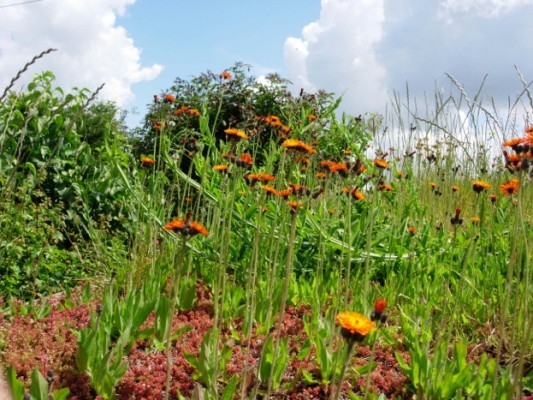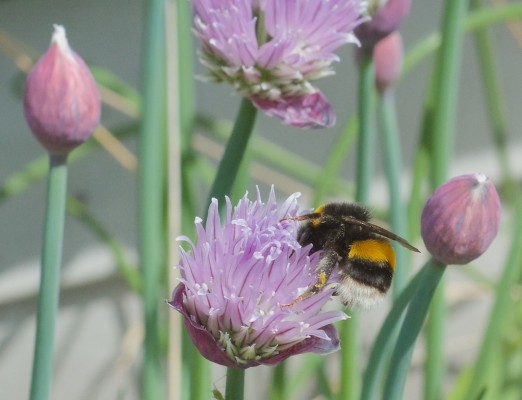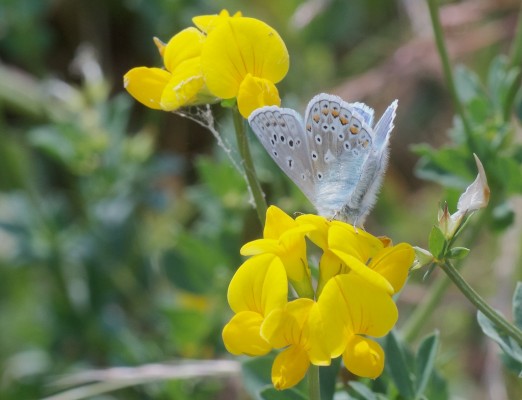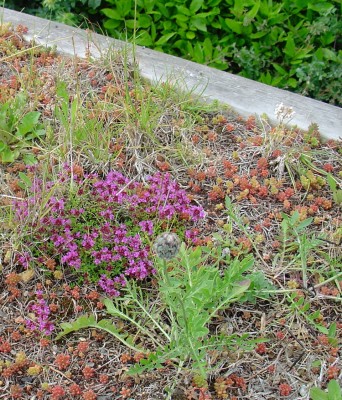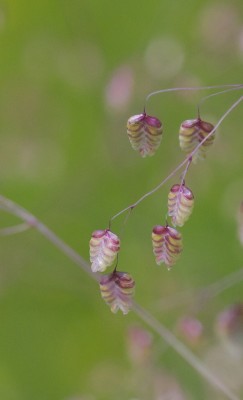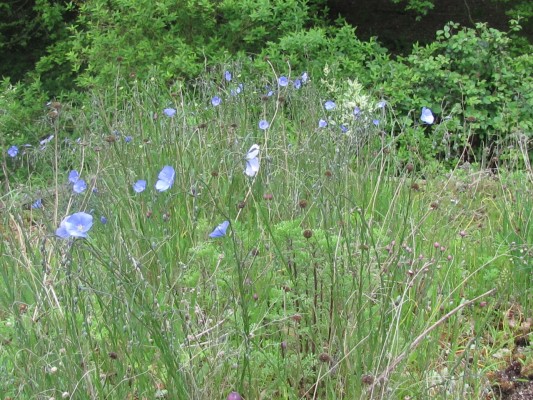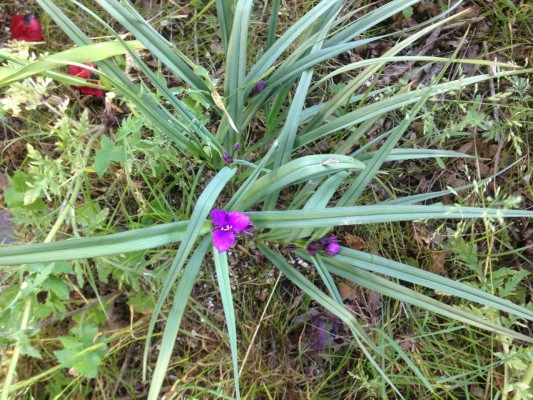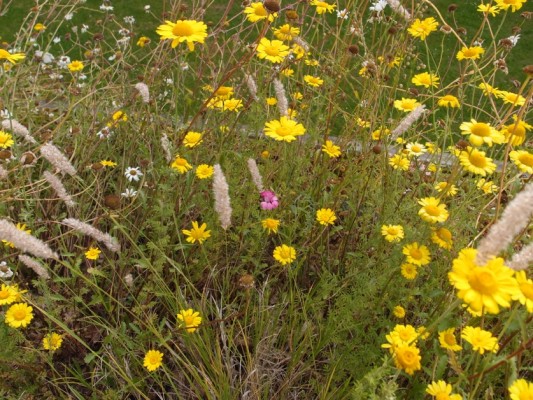John’s wildflower recommendations for the new year cover some of his favourite green roof plants. With the skies grey and cold this should bring a little cheer and colour for January.
John’s wildflower recommendations 1 – Orange hawkweed or Fox and cubs.
Not strictly native but widely naturalised. A good green roof plant, happy on soils 100mm or above. Quite vigorous, I usually plant 1 reasonable clump on each roof. This wildflower is great for bees and if you’re like me and love orange! it is one to plant.
John’s wildflower recommendations 2 – Wild chives
Very variable but a great and some would say essential edition to a green roof. We use both the wild and culinary types on our roofs. They will make it through most droughts and can hang on in soils from 60mm deep. I really like the wild version as it varies in habit with often quite curly grey/green leaves. Its also more compact and tougher if walked over, Dusty take note! It’s is, as with virtually all the plants we use on roofs, great for bees and other pollinators. Another green roof plants that is naturally happy on shallow soils over rock. Pretty much your average green roof conditions!
John’s wildflower recommendations 3 – Biting stonecrop
A sedum species that make up the ‘sedum mats’ for green roofs. Though it tends to get out competed by other sedum species. Once you start adding more variation in soil depth to your roof you open up a wonderful mix of plants/textures and wildlife, so get more soil up there if won’t more out of your roof than just 2 inch high succulents. This plant is a great addition to any green roof and will tend to the shallower parts and the edges.
John’s wildflower recommendations 4 – Birdsfoot trefoil
I always associated this plant with sun baked and very dry shallow soils where it happily survives in the wild. However the stress and high temperatures of a green roof test even this plant. Best grown in soils 120mm-180mm deep for it to do well. In the right place its a great plant, good for bees and of course the food plant for 7 native butterflies. Happy days.
John’s wildflower recommendations 5 – Wild thyme
This is a must for your green roof, will handle the heat even in soils down to 70mm, self seeds well, bees love it and smells great well you walk over it. We have quite a few roofs that we visit simply to wander around crushing the thyme, basil and marjoram. Forget the flowers go for the aroma of the Mediterranean.
John’s wildflower recommendations 6 Quaking grass
We don’t use many grasses within our initial planting but this one is really good. It’s clump forming and spreads relatively slowly so doesn’t compete for the moisture in the way other more vigorous grass species do. It adds texture/shape and some denser cover for invertebrates. You also get those droplet like seed heads later in the year.
John’s wildflower recommendations 7 Blue flax
We nearly always include this in our seed mix for a roof. The hanging blue flowers and slender stems make this a wonderful sight during May. Once established the thick clumps last for many years and can cope with soils down to 90mm.
John’s wildflower recommendations 8 Tradescantia
I found this on one of our container roofs, not sure what species it is but seems to be doing well. Although knocked back by the drought it recovered each time and produced some cool blue/purple flowers that seem to attract bees. It has a great common name – Spiderwort. Probably best on soils 100mm or above and light shade. One to try.
John’s wildflower recommendations 9 Yellow camomile
One of my favourite non-natives for the roof. We always add this to the seed mix. It’s yellow flowers often dominate the roofs in the second and third years. Despite growing often over the whole roof it doesn’t over power its neighbours. The flowers are held up on single stems that allow plenty of light and space for other plants. The foliage has a feathery grey/green colour contrasting with the bright yellow flowers. A must unless you have to keep to all natives.
